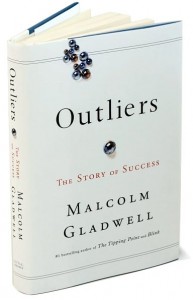I have a confession to make.
I would lust after Kentucky Fried Chicken and would feel really bad after eating it. Not from a guilt point of view due to unhealthy indulgence. Nope, I really do physically feel bad after finishing the last piece of fried chicken that has been secretly embalmed with 11 herbs and spices. It always leaves a peculiar after-taste that can be described as a bad combination of sickeningly creamy grease, refrigerated overnight chicken soup and sweaty salty skin.
Which is like the new Dan Brown book, The Lost Symbol. While I couldn’t resist the marketing messages which promoted this book like it is the sequel to the Holy Bible, the feeling that I get after completing it can be described as a bad combination of sickeningly ill-constructed scenes and dialogues, refrigerated plots from previous books and conspiracy theories and non-sweaty predictable plot twists.
In this novel, Dan Brown took familiar plot elements from The DaVinci Code, Angels & Demons, Deception Point and Digital Fortress and transported the story to Washington D.C. This time around, a diabolical and murderous villain with the moniker of Mal’akh forces Robert Langdon to once again solve puzzles based on long lost symbols. I wouldn’t write anything more about the plot because the book has nothing else going for it and I do not want to spoil it in case one wants to read this book or wait for the Tom Hanks movie version of the book.
What I’ve discovered when reading The Lost Symbol is that Dan Brown has unabashedly recycled plot elements and characters from his old novels. (For those who do not like spoilers, skip to the last paragraph now).
For instance:-
- Robert Langdon is forced into solving the puzzles
- Female co-lead is forced into the situation too
- It’s a race against time
- The secret that is such a big deal is always hidden in plain sight in paintings, buildings, etc
- The secret, if made known to all, will cause massive chaos and disorder
- There is a an official from hell who apparently hampers Langdon and his female co-lead but who eventually turns out to be one of the good guys after all
The saving grace to this book is that with all the flaws it is still fun to read. That is if one lowers one’s expectations enough to read it for the pulp fiction value that it is and nothing more.
dsdI have a confession to make.
I would lust after Kentucky Fried Chicken and would feel really bad after eating it. Not from a guilt point of view due to unhealthy indulgence. Nope, I really do physically feel bad after finishing the last piece of fried chicken that has been secretly embalmed with 11 herbs and spices. It always leaves a peculiar after-taste that can be described as a bad combination of sickeningly creamy grease, refrigerated overnight chicken soup and sweaty salty skin.
Which is like the new Dan Brown book, The Lost Symbol. While I couldn’t resist the marketing messages which promoted this book like it is the sequel to the Holy Bible, the feeling that I get after completing it can be described as a bad combination of sickeningly ill-constructed scenes and dialogues, refrigerated plots from previous books and conspiracy theories and non-sweaty predictable plot twists.
In this novel, Dan Brown took familiar plot elements from The DaVinci Code, Angels & Demons, Deception Point and Digital Fortress and transported the story to Washington D.C. This time around, a diabolical and murderous villain with the moniker of Mal’akh forces Robert Langdon to once again solve puzzles based on long lost symbols. I wouldn’t write anything more about the plot because the book has nothing else going for it and I do not want to spoil it in case one wants to read this book or wait for the Tom Hanks movie version of the book.
What I’ve discovered when reading The Lost Symbol is that Dan Brown has unabashedly recycled plot elements and characters from his old novels. (For those who do not like spoilers, skip to the last paragraph now).
For instance:-
• Robert Langdon is forced into solving the puzzles
• Female co-lead is forced into the situation too
• It’s a race against time
• The secret that is such a big deal is always hidden in plain sight in paintings, buildings, etc
• The secret, if made known to all, will cause massive chaos and disorder
• There is a an official from hell who apparently hampers Langdon and his female co-lead but who eventually turns out to be one of the good guys after all
The saving grace to this book is that with all the flaws it is still fun to read. That is if one lowers one’s expectations enough to read it for the pulp fiction value that it is and nothing more.


 A long time ago, in a galaxy far, far away…Star Wars changed the way how movies were made, how they were marketed and how they can fuel cultural discourse. Which is why I took 3 months to pen my thoughts on Star Wars The Force Awakens so that I can be freed from its ubiquitous, suffocating and lingering hype that was cranked into full force by Disney months before the movie was released.
A long time ago, in a galaxy far, far away…Star Wars changed the way how movies were made, how they were marketed and how they can fuel cultural discourse. Which is why I took 3 months to pen my thoughts on Star Wars The Force Awakens so that I can be freed from its ubiquitous, suffocating and lingering hype that was cranked into full force by Disney months before the movie was released.